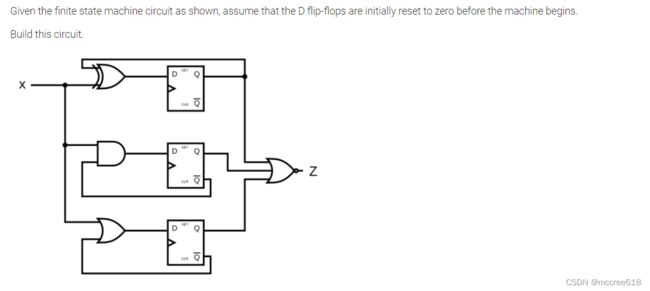- Python高效编程技术大全:从解释器到异步编程
竹石文化传播有限公司
本文还有配套的精品资源,点击获取简介:《Python高性能编程技术》旨在指导开发者深入理解Python的性能优化方法。本书涵盖了从解释器机制、数据结构和内置函数的优化,到使用Numpy、Pandas、多线程和多进程进行数值计算和数据处理,再到并发编程和性能分析等全面技术,帮助开发者提升代码执行效率和处理各种性能挑战。1.Python解释器性能分析Python作为一门解释型语言,其性能受到解释器行为
- Java ArrayList之应用技巧
wofaba
javapythonwindows
JavaArrayList之应用技巧ArrayList是Java集合框架中最常用的动态数组实现,提供了灵活的数据存储和操作方式。掌握其核心技巧能显著提升开发效率。初始化与容量优化默认构造函数创建的ArrayList初始容量为10,频繁扩容可能影响性能。预先估算数据量并指定初始容量可减少扩容开销://预估存放500个元素ArrayListlist=newArrayListsrcList=newArr
- Java 列表排序之应用技巧
wofaba
javapythonwindows
Java列表排序之应用技巧在实际开发中,列表排序是常见的操作之一。Java提供了多种排序方式,包括使用Collections.sort()、List.sort()以及结合Comparator实现自定义排序。以下是一些实用的排序技巧和代码示例。基本排序方法对于基本数据类型或已实现Comparable接口的对象,可以直接使用Collections.sort()进行排序。例如,对Integer列表进行排
- 内核编译配置选项简介 (2.4.18-rmk7-pxal)(转)
wenlifu71022
linux内核编译网络idesystemlinuxnetworkinglinux内核
http://blog.chinaunix.net/u1/40228/showart_335965.htmlCodematurityleveloptions代码成熟度选项[*]Promptfordevelopmentand/orincompletecode/drivers显示尚在开发中或尚未完成的代码与驱动.除非你是测试人员或者开发者,否则请勿选择我是开发者,所以选[*][]Promptforob
- Spring AOP(面向切面编程,Aspect-Oriented Programming)
SpringAOP(面向切面编程,Aspect-OrientedProgramming)一、SpringAOP是什么?SpringAOP是Spring框架提供的面向切面编程支持,用于将横切关注点(cross-cuttingconcerns,如日志、事务、权限检查等)与核心业务逻辑分离。AOP允许开发者通过声明式方式将通用功能模块化,减少代码重复,提高代码可维护性。核心概念Aspect(切面):切面
- PHPStorm携手ThinkPHP8:开启高效开发之旅
奔跑吧邓邓子
项目攻略phpstormThinkPHPThinkPHP8php开发
目录一、前期准备1.1开发环境搭建1.2配置Xdebug二、PHPStorm集成ThinkPHP82.1导入ThinkPHP8项目2.2配置PHP解释器2.3配置服务器三、ThinkPHP8项目开发基础3.1项目结构剖析3.2控制器与方法创建3.3视图渲染与数据传递四、数据库操作与模型定义4.1数据库配置4.2模型定义与使用4.3数据库迁移与种子五、高级开发技巧与优化5.1路由优化与管理5.2中间
- 如何解决AttributeError: ‘NoneType‘ object has no attribute问题
如何解决AttributeError:‘NoneType’objecthasnoattribute问题问题背景与概述在Python项目开发和调试过程中,经常会碰到这样一个异常信息:AttributeError:'NoneType'objecthasnoattribute'foo'这意味着你尝试访问或调用某个对象的属性/方法foo,但此时对象本身是None,从而触发了AttributeError。本
- 电商新风口:实时视频直播模型MirageLSD震撼发布!| AI日报
未来世界2099
AI日报人工智能大模型MirageLSD
应用1、OpenAI重磅推出ChatGPTAgent!智能体时代正式开启,浏览器将被AI接管2、00后天才团队震撼发布!全球首个A股金融博弈智能体应用横空出世3、KimiPlayground震撼上线:AI助手进化成"全能工具王",开发者狂欢开启4、MistralAI聊天机器人LeChat大升级:语音交互+深度研究+图像编辑三连击5、Slack掀起AI办公革命:聊天自动总结、术语秒懂、工作流一键自动
- 初级程序员的复仇!硅谷科技圈技术大佬神作:之前说的vibe coding都是放屁!代理军团来了!2025年底手动编码就会消失!
jike007gt
科技人工智能大数据
文章指出,初级开发者更愿意接受并快速适应AI工具,而部分资深开发者则因对新技术的抵触而落后。即,在AI时代,灵活适应比经验更重要!这导致初级开发者在新技术环境中表现出更高的效率和适应性,成为企业在AI编程时代的重要资产。前天Claude4刷屏了,但不知道大家有没有注意到,Anthropic的老大,Dario,时不时就会在keynote中就会引用一篇文章:《RevengeoftheJuniorDev
- 【亲测免费】 CAN总线嵌入式开发——从入门到实践:开启智能通信新篇章
邴洁沫Edna
CAN总线嵌入式开发——从入门到实践:开启智能通信新篇章去发现同类优质开源项目:https://gitcode.com/项目介绍在现代嵌入式系统中,CAN(ControllerAreaNetwork)总线技术因其高效、可靠的通信能力而备受青睐。为了帮助广大开发者、电子工程师以及对CAN总线技术感兴趣的学生和研究人员更好地掌握这一技术,我们推出了“CAN总线嵌入式开发——从入门到实践”项目。本项目不
- 微信小游戏源码和小程序游戏代码开发搭建部署
南云放马归
本文将利用小程序游戏提供的能力制作一个简单的方块旋转小程序游戏,旨在从零开始介绍小程序游戏的开发过程。源码:casgams.top/gm注册小程序游戏账号进入小程序注册页面按照指引填写信息并提交相应信息,服务类别选择“程序游戏”,子类别可以先选择“休闲程序游戏”,您可以拥有自己的小程序游戏账号,安装并启动开发者工具。fromairtest.core.apiimport*auto_setup(__f
- 移动开发中移动UI设计的布局策略全解析
移动开发前沿
移动端开发宝典uiai
移动开发中移动UI设计的布局策略全解析关键词:移动UI布局、流式布局、弹性布局、响应式布局、约束布局、适配策略、跨设备兼容摘要:在移动开发中,手机屏幕尺寸从4英寸到10英寸不等,分辨率从720P到4K,还有横竖屏切换、折叠屏等新形态。如何让UI在不同设备上“不变形、不错位、不丢失信息”?本文将从“为什么需要布局策略”出发,用“小明设计奶茶店APP”的故事串起固定布局、流式布局、弹性布局、响应式布局
- Flutter低代码开发:使用工具加速应用构建
移动开发前沿
flutter低代码rxjavaai
Flutter低代码开发:使用工具加速应用构建关键词:Flutter、低代码开发、应用构建、开发工具、加速开发摘要:本文深入探讨了Flutter低代码开发的相关内容。首先介绍了低代码开发的背景和在Flutter中的应用目的,接着详细解释了Flutter、低代码开发等核心概念及其相互关系。通过具体的算法原理、数学模型和项目实战案例,展示了如何利用低代码工具加速Flutter应用的构建。还探讨了其实际
- 2021.10.18-2021.10.24:一周计划(10.15)+一周总结
从21年9月11日起
本周最重要的事情:因上周调整的感受很糟糕,因此调整未21:15-3:45.一、事业1、工作:100封开发信。(完成30%)2、学习如何去开发客户:30min/天*4天(2天的学习)二、心灵1、晨间日记+一日总结。----100%完成2、读经:15分钟/天*7天----完成1天3、10min/天*7天观照自己的内心。---未完成,没有意识去做三、成长1、趁早学习:3个主题并行。美貌、赚钱、饮食—-并
- 深入理解设计模式之外观模式:简化复杂系统的艺术
vvilkin的学习备忘
设计模式设计模式外观模式
为什么需要外观模式?在软件开发中,我们经常会遇到这样的情况:一个功能需要调用多个子系统或复杂的类结构来完成。随着系统规模的扩大,子系统之间的交互变得越来越复杂,客户端代码需要了解每个子系统的细节才能正确使用它们。这不仅增加了代码的复杂度,也使得系统难以维护和扩展。想象一下,你每次开车都需要手动控制发动机的点火时机、燃油喷射量、气门开闭时间等所有细节,而不是简单地转动钥匙或按下启动按钮,这将是多么繁
- UE5网络联机函数
UE星空
UE蓝图ue5
FindSessionsCreateSessionJoinSessionDestroySessionSteam是p2p直接联机一、steam提供的测试用AppIdAppId是steam为每一款游戏所设定的独有标识,每一款要上架steam的游戏都会拥有独一无二的AppId。不过为了方便开发者测试,steam提供了游戏名为SpaceWar的AppId480供大家免费使用。二、根据虚幻文档接入Onlin
- mac配置svn
qianmu0322
macossvnxcode
一、苹果上没有小乌龟客户端,可用snailSVN精简版本,免费,基本功能都有二、mac上下载了一个破解版本的2022的idea,却没有svn的命令行工具,在windows上安装小乌龟的时候勾选上就能关联了,mac上需自行安装1、安装Xcode命令行工具Xcode是macOS的集成开发环境,它包含Homebrew正常运行所需的工具。注意:Xcode通常是安装和使用各种工具的先决条件,例如PuTTY,
- 零基础Python入门(1)——手把手安装PyCharm并打印Hello World
名字都被谁用了
Python入门pythonpycharm开发语言
一、Python开发环境全攻略1.1Python的"身份证"——版本选择指南Python目前主流版本分为2.x和3.x两大分支,官方已于2020年正式停止对Python2的维护。对于新手,我们强烈建议选择Python3.10及以上版本。这个版本区间既保留了经典语法特性,又支持最新语法糖(如模式匹配),同时具备良好的第三方库兼容性。版本号小知识:3.10.6中的3表示大版本10代表功能版本6是维护版
- 通过 Ollama 获取并运行本地大型语言模型(LLM)
Ollama是一个开源工具,专为在本地机器上便捷部署和运行大型语言模型(LLM)而设计。它支持多种操作系统(Windows、macOS、Linux),并提供简单的命令行接口和API,适合开发者、研究人员以及对数据隐私有较高要求的用户。本文档将详细指导您如何通过Ollama在本地获取和运行LLM。1.准备工作在开始之前,请确保您的系统满足以下要求:操作系统:Windows、macOS或Linux(支
- 软件测试入门指南:零基础到实战通关手册
一、为什么需要软件测试?行业现状(2024年数据)全球软件缺陷造成的经济损失高达$2.4万亿(来源:NIST报告)优秀测试人员与开发人员配比应达1:5(头部互联网企业实际数据)经典案例迪士尼+上线首日因负载测试不足导致服务器崩溃某银行系统未做金额边界测试,引发超额转账漏洞二、测试工程师的职责全景图(配图:测试工作流程图)阶段核心工作产出物示例需求分析参与评审,提取测试点测试需求跟踪矩阵测试设计编写
- 3D打印遥控投喂船:用ESP32C3打造低成本水上机器人
iotzgq
机器人
项目缘起:从脚踏船到智能投喂的创新转身在创客圈,灵感往往源于意外的"灵光一闪"。这个3D打印遥控投喂船的项目最初只是想做一艘普通的遥控脚踏船,直到开发者突发奇想:为什么不增加一个自动投喂装置?这个改动让项目瞬间具备了实用价值——不仅能在湖面操控小船畅玩,还能精准投放鱼食或鱼药到人工难以到达的水域。最令人称道的是其无线通信方案:放弃了传统遥控模块,采用ESP-NOW协议实现船与遥控器的通信。这种方案
- PyCharm高效入门指南:快速提升Python开发效率
famenzhiling
pythonpycharmide
1.引言PyCharm简介:JetBrains开发的Python集成开发环境(IDE),适用于专业开发者和初学者。为什么选择PyCharm:高效代码编辑、智能工具集成和强大的调试功能。目标读者:Python新手或有其他IDE经验但想快速上手PyCharm的用户。2.安装与初始配置下载与安装:访问JetBrains官网下载PyCharmCommunity(免费版)或Professional(付费版)
- UMLS(统一医学语言系统)—— 小白最强攻略(讲解+运用)
1概念介绍1.1UMLS介绍UMLS(UnifiedMedicalLanguageSystem),是由美国国立医学图书馆(NLM)开发的,旨在通过整合各种生物医学术语系统来促进医学信息的统一检索和应用。链接:https://uts.nlm.nih.gov/uts/signUpUMLS参考手册:https://www.ncbi.nlm.nih.gov/books/NBK9676/技术上:Unifie
- C# 设计模式概况
业余撸码人
.net设计模式c#.net
什么是设计模式大家熟知的GOF23种设计模式,源自《DesignPatterns:ElementsofReusableObject-OrientedSoftware》一书,由ErichGamma、RichardHelm、RalphJohnson和JohnVlissides合著,四人组GangofFour简称GOF。总结了在面向对象语言开发过程中常见问题的解决方案。设计模式是面向对象语言开发过程中,
- 16路串口光纤通信FPGA项目实现指南 - 第二部分(上)
无证驾驶梁嗖嗖
FPGAfpga开发
16路串口光纤通信FPGA项目实现指南-第二部分(上)四、Aurora通信接口实现4.1Aurora顶层模块设计文件位置:uart_fiber.srcs/sources_1/new/aurora_top.vmoduleaurora_top(inputinit_clk,//初始化时钟(通常为50MHz)outputuser_clk_i,//Aurora用户时钟输出outputCHANNEL_UP,/
- 软件测试理论基础、质量保证常见面试题
程序员阿沐
全面掌握软件测试理论基础、文档编写,测试流程1.测试分为哪几个阶段?⒉谈谈你之前测试的项目流程,在每个阶段的输出有哪些?3.谈谈敏捷模式的认识?4.linux常见查看日志命令有哪些?5.线上质量BUG频频爆发怎么办?6.如何分析一个bug是前端还是后端的问题?这些问题你一定要能够很全面的表述出来。比如说我现在是面试官,我第一个肯定不会去问你哪些代码的问题,也不会问你自动化、测试开发的问题。第一个查
- 我们天天为钱发愁,但有两种人不会为钱发愁。
职场阿良
钱不是万能的,但是没有钱是万万不能的,看似很多人都懂的道理,其实并不是所有人都能理解的道理,钱到底重不重要,答案是钱很重要,但是钱并不是人生的全部。我们生活中吃个饭、买瓶水、打个电话、打个车等等处处离不开钱,所以我们努力工作也是为了钱,赚更多的钱只为生活中选择的机会更多,而不是被动接受生活。因为每个人对金钱的欲望呈阶段性的变化,所以才会激发更多潜能去和探索开发更多的未知,如果满足于现状将会失去奋斗
- FPGA中建立时间与保持时间以及应用
Mr.zhang_FPGA
FPGAverilog建立时间保持时间FPGA时序
FPGA中建立时间与保持时间以及应用建立时间与保持时间的概念触发器中的建立时间与保持时间寄存器级建立时间与保持时间建立时间保持时间模型相关时序参数建立时间保持时间实际应用解决时序问题的一些方法建立时间与保持时间的概念对于数字系统而言,建立时间(setuptime)与保持时间(holdtime)是基础,数字系统的稳定性绝大部分都取决与系统是否满足这两个条件,很多人都只是知道两者的概念如:建立时间:信
- java中map和对象互转工具类
在项目开发中,经常碰到map转实体对象或者对象转map的场景,工作中,很多时候我们可能比较喜欢使用第三方jar包的API对他们进行转化,而且用起来也还算方便,比如像fastJson就可以轻松实现map和对象的互转,但这里,我想通过反射的方式对他们做转化,也算是对反射的学习和研究吧;1、map转对象;主要思路,将map中的key-value取出来,然后和给定的对象去匹配,为了使工具方法更具通用性,直
- Redisson:强大的Redis Java客户端库
大宝S**蜜
java
Redisson:强大的RedisJava客户端库在Java应用程序中,Redis经常作为缓存、消息代理、分布式锁等功能的首选。然而,直接使用Redis的原生协议或Jedis等简单的Java客户端可能不足以满足复杂的分布式和并发需求。这时,Redisson作为一个功能强大的RedisJava客户端库,提供了许多高级功能和易用性改进,成为开发者的有力工具。1.Redisson简介Redisson是一
- ASM系列五 利用TreeApi 解析生成Class
lijingyao8206
ASM字节码动态生成ClassNodeTreeAPI
前面CoreApi的介绍部分基本涵盖了ASMCore包下面的主要API及功能,其中还有一部分关于MetaData的解析和生成就不再赘述。这篇开始介绍ASM另一部分主要的Api。TreeApi。这一部分源码是关联的asm-tree-5.0.4的版本。
在介绍前,先要知道一点, Tree工程的接口基本可以完
- 链表树——复合数据结构应用实例
bardo
数据结构树型结构表结构设计链表菜单排序
我们清楚:数据库设计中,表结构设计的好坏,直接影响程序的复杂度。所以,本文就无限级分类(目录)树与链表的复合在表设计中的应用进行探讨。当然,什么是树,什么是链表,这里不作介绍。有兴趣可以去看相关的教材。
需求简介:
经常遇到这样的需求,我们希望能将保存在数据库中的树结构能够按确定的顺序读出来。比如,多级菜单、组织结构、商品分类。更具体的,我们希望某个二级菜单在这一级别中就是第一个。虽然它是最后
- 为啥要用位运算代替取模呢
chenchao051
位运算哈希汇编
在hash中查找key的时候,经常会发现用&取代%,先看两段代码吧,
JDK6中的HashMap中的indexFor方法:
/**
* Returns index for hash code h.
*/
static int indexFor(int h, int length) {
- 最近的情况
麦田的设计者
生活感悟计划软考想
今天是2015年4月27号
整理一下最近的思绪以及要完成的任务
1、最近在驾校科目二练车,每周四天,练三周。其实做什么都要用心,追求合理的途径解决。为
- PHP去掉字符串中最后一个字符的方法
IT独行者
PHP字符串
今天在PHP项目开发中遇到一个需求,去掉字符串中的最后一个字符 原字符串1,2,3,4,5,6, 去掉最后一个字符",",最终结果为1,2,3,4,5,6 代码如下:
$str = "1,2,3,4,5,6,";
$newstr = substr($str,0,strlen($str)-1);
echo $newstr;
- hadoop在linux上单机安装过程
_wy_
linuxhadoop
1、安装JDK
jdk版本最好是1.6以上,可以使用执行命令java -version查看当前JAVA版本号,如果报命令不存在或版本比较低,则需要安装一个高版本的JDK,并在/etc/profile的文件末尾,根据本机JDK实际的安装位置加上以下几行:
export JAVA_HOME=/usr/java/jdk1.7.0_25
- JAVA进阶----分布式事务的一种简单处理方法
无量
多系统交互分布式事务
每个方法都是原子操作:
提供第三方服务的系统,要同时提供执行方法和对应的回滚方法
A系统调用B,C,D系统完成分布式事务
=========执行开始========
A.aa();
try {
B.bb();
} catch(Exception e) {
A.rollbackAa();
}
try {
C.cc();
} catch(Excep
- 安墨移动广 告:移动DSP厚积薄发 引领未来广 告业发展命脉
矮蛋蛋
hadoop互联网
“谁掌握了强大的DSP技术,谁将引领未来的广 告行业发展命脉。”2014年,移动广 告行业的热点非移动DSP莫属。各个圈子都在纷纷谈论,认为移动DSP是行业突破点,一时间许多移动广 告联盟风起云涌,竞相推出专属移动DSP产品。
到底什么是移动DSP呢?
DSP(Demand-SidePlatform),就是需求方平台,为解决广 告主投放的各种需求,真正实现人群定位的精准广
- myelipse设置
alafqq
IP
在一个项目的完整的生命周期中,其维护费用,往往是其开发费用的数倍。因此项目的可维护性、可复用性是衡量一个项目好坏的关键。而注释则是可维护性中必不可少的一环。
注释模板导入步骤
安装方法:
打开eclipse/myeclipse
选择 window-->Preferences-->JAVA-->Code-->Code
- java数组
百合不是茶
java数组
java数组的 声明 创建 初始化; java支持C语言
数组中的每个数都有唯一的一个下标
一维数组的定义 声明: int[] a = new int[3];声明数组中有三个数int[3]
int[] a 中有三个数,下标从0开始,可以同过for来遍历数组中的数
- javascript读取表单数据
bijian1013
JavaScript
利用javascript读取表单数据,可以利用以下三种方法获取:
1、通过表单ID属性:var a = document.getElementByIdx_x_x("id");
2、通过表单名称属性:var b = document.getElementsByName("name");
3、直接通过表单名字获取:var c = form.content.
- 探索JUnit4扩展:使用Theory
bijian1013
javaJUnitTheory
理论机制(Theory)
一.为什么要引用理论机制(Theory)
当今软件开发中,测试驱动开发(TDD — Test-driven development)越发流行。为什么 TDD 会如此流行呢?因为它确实拥有很多优点,它允许开发人员通过简单的例子来指定和表明他们代码的行为意图。
TDD 的优点:
&nb
- [Spring Data Mongo一]Spring Mongo Template操作MongoDB
bit1129
template
什么是Spring Data Mongo
Spring Data MongoDB项目对访问MongoDB的Java客户端API进行了封装,这种封装类似于Spring封装Hibernate和JDBC而提供的HibernateTemplate和JDBCTemplate,主要能力包括
1. 封装客户端跟MongoDB的链接管理
2. 文档-对象映射,通过注解:@Document(collectio
- 【Kafka八】Zookeeper上关于Kafka的配置信息
bit1129
zookeeper
问题:
1. Kafka的哪些信息记录在Zookeeper中 2. Consumer Group消费的每个Partition的Offset信息存放在什么位置
3. Topic的每个Partition存放在哪个Broker上的信息存放在哪里
4. Producer跟Zookeeper究竟有没有关系?没有关系!!!
//consumers、config、brokers、cont
- java OOM内存异常的四种类型及异常与解决方案
ronin47
java OOM 内存异常
OOM异常的四种类型:
一: StackOverflowError :通常因为递归函数引起(死递归,递归太深)。-Xss 128k 一般够用。
二: out Of memory: PermGen Space:通常是动态类大多,比如web 服务器自动更新部署时引起。-Xmx
- java-实现链表反转-递归和非递归实现
bylijinnan
java
20120422更新:
对链表中部分节点进行反转操作,这些节点相隔k个:
0->1->2->3->4->5->6->7->8->9
k=2
8->1->6->3->4->5->2->7->0->9
注意1 3 5 7 9 位置是不变的。
解法:
将链表拆成两部分:
a.0-&
- Netty源码学习-DelimiterBasedFrameDecoder
bylijinnan
javanetty
看DelimiterBasedFrameDecoder的API,有举例:
接收到的ChannelBuffer如下:
+--------------+
| ABC\nDEF\r\n |
+--------------+
经过DelimiterBasedFrameDecoder(Delimiters.lineDelimiter())之后,得到:
+-----+----
- linux的一些命令 -查看cc攻击-网口ip统计等
hotsunshine
linux
Linux判断CC攻击命令详解
2011年12月23日 ⁄ 安全 ⁄ 暂无评论
查看所有80端口的连接数
netstat -nat|grep -i '80'|wc -l
对连接的IP按连接数量进行排序
netstat -ntu | awk '{print $5}' | cut -d: -f1 | sort | uniq -c | sort -n
查看TCP连接状态
n
- Spring获取SessionFactory
ctrain
sessionFactory
String sql = "select sysdate from dual";
WebApplicationContext wac = ContextLoader.getCurrentWebApplicationContext();
String[] names = wac.getBeanDefinitionNames();
for(int i=0; i&
- Hive几种导出数据方式
daizj
hive数据导出
Hive几种导出数据方式
1.拷贝文件
如果数据文件恰好是用户需要的格式,那么只需要拷贝文件或文件夹就可以。
hadoop fs –cp source_path target_path
2.导出到本地文件系统
--不能使用insert into local directory来导出数据,会报错
--只能使用
- 编程之美
dcj3sjt126com
编程PHP重构
我个人的 PHP 编程经验中,递归调用常常与静态变量使用。静态变量的含义可以参考 PHP 手册。希望下面的代码,会更有利于对递归以及静态变量的理解
header("Content-type: text/plain");
function static_function () {
static $i = 0;
if ($i++ < 1
- Android保存用户名和密码
dcj3sjt126com
android
转自:http://www.2cto.com/kf/201401/272336.html
我们不管在开发一个项目或者使用别人的项目,都有用户登录功能,为了让用户的体验效果更好,我们通常会做一个功能,叫做保存用户,这样做的目地就是为了让用户下一次再使用该程序不会重新输入用户名和密码,这里我使用3种方式来存储用户名和密码
1、通过普通 的txt文本存储
2、通过properties属性文件进行存
- Oracle 复习笔记之同义词
eksliang
Oracle 同义词Oracle synonym
转载请出自出处:http://eksliang.iteye.com/blog/2098861
1.什么是同义词
同义词是现有模式对象的一个别名。
概念性的东西,什么是模式呢?创建一个用户,就相应的创建了 一个模式。模式是指数据库对象,是对用户所创建的数据对象的总称。模式对象包括表、视图、索引、同义词、序列、过
- Ajax案例
gongmeitao
Ajaxjsp
数据库采用Sql Server2005
项目名称为:Ajax_Demo
1.com.demo.conn包
package com.demo.conn;
import java.sql.Connection;import java.sql.DriverManager;import java.sql.SQLException;
//获取数据库连接的类public class DBConnec
- ASP.NET中Request.RawUrl、Request.Url的区别
hvt
.netWebC#asp.nethovertree
如果访问的地址是:http://h.keleyi.com/guestbook/addmessage.aspx?key=hovertree%3C&n=myslider#zonemenu那么Request.Url.ToString() 的值是:http://h.keleyi.com/guestbook/addmessage.aspx?key=hovertree<&
- SVG 教程 (七)SVG 实例,SVG 参考手册
天梯梦
svg
SVG 实例 在线实例
下面的例子是把SVG代码直接嵌入到HTML代码中。
谷歌Chrome,火狐,Internet Explorer9,和Safari都支持。
注意:下面的例子将不会在Opera运行,即使Opera支持SVG - 它也不支持SVG在HTML代码中直接使用。 SVG 实例
SVG基本形状
一个圆
矩形
不透明矩形
一个矩形不透明2
一个带圆角矩
- 事务管理
luyulong
javaspring编程事务
事物管理
spring事物的好处
为不同的事物API提供了一致的编程模型
支持声明式事务管理
提供比大多数事务API更简单更易于使用的编程式事务管理API
整合spring的各种数据访问抽象
TransactionDefinition
定义了事务策略
int getIsolationLevel()得到当前事务的隔离级别
READ_COMMITTED
- 基础数据结构和算法十一:Red-black binary search tree
sunwinner
AlgorithmRed-black
The insertion algorithm for 2-3 trees just described is not difficult to understand; now, we will see that it is also not difficult to implement. We will consider a simple representation known
- centos同步时间
stunizhengjia
linux集群同步时间
做了集群,时间的同步就显得非常必要了。 以下是查到的如何做时间同步。 在CentOS 5不再区分客户端和服务器,只要配置了NTP,它就会提供NTP服务。 1)确认已经ntp程序包: # yum install ntp 2)配置时间源(默认就行,不需要修改) # vi /etc/ntp.conf server pool.ntp.o
- ITeye 9月技术图书有奖试读获奖名单公布
ITeye管理员
ITeye
ITeye携手博文视点举办的9月技术图书有奖试读活动已圆满结束,非常感谢广大用户对本次活动的关注与参与。 9月试读活动回顾:http://webmaster.iteye.com/blog/2118112本次技术图书试读活动的优秀奖获奖名单及相应作品如下(优秀文章有很多,但名额有限,没获奖并不代表不优秀):
《NFC:Arduino、Andro


